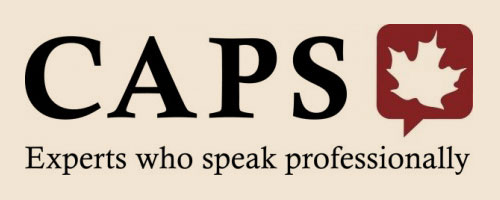3 Common Public Speaking Mistakes and How to Fix Them
How often do you frustrate or alienate your audience when you give a presentation? More importantly, how would you even know if you’re doing it?
Here are 3 things that you’ll want to keep in mind during your next presentation to avoid common speaking mistakes, and to make sure that your audience feels satisfied, interested, and respected.
(Transcript of video below…)
VIDEO TRANSCRIPT:
Have you ever been to a presentation and wondered, “what’s the point the speaker is trying to make?” Have you ever listened to a speech where the content was way too complex, or way too simplified? Have you ever seen a speaker go over time, and you’ve got to leave, but you don’t want to be the only person walking out? It’s all very frustrating if you’re in that audience.
I’m Suzannah Baum. Here are 3 things that you’ll want to keep in mind during YOUR next presentation to make sure that your audience is interested, satisfied, and respected:
- Know your audience. Research them. Who are they, why are they there, what are they expecting to hear from you, and what is their pre-existing knowledge of the topic that you’ll be speaking about? So – If you’re an engineer, the language and concepts you present should be very different depending on whether you’re speaking to other engineers or to high school students. Tailor the talk to the demographic of your audience.
- A strong speech structure. There are many ways to structure a speech. One common way is the “tell them” formula – in the introduction, tell them what you’re going to tell them. Here’s where you set out the main issue, or key point that you’ll be speaking about. In the middle, tell them… with facts, stories, statistics, and examples that back up your key point. And in the conclusion, tell them what you told them. This is where you’ll recap your main points, or suggest the action you want your audience to take. So – tell them what you’re going to tell them. Tell them. Then tell them what you told them. It’s clear, effective, and keeps you – and your audience – on track.
- When your speech goes over time, you cut into everyone else’s time, and that’s not fair. Avoid this by timing yourself when you practice so you can keep your speech within the limits. And if possible, ask the audience to hold all their questions to the end so that your speech doesn’t have to be interrupted. Your audience’s time is as valuable as yours. Respect your audience, by respecting their time.
So to recap – Know your audience. Have a strong speech structure. And stay within your time limit. And as always, before you step out in front of an audience, make sure that you’re fully prepared, rehearsed, and ready to give your audience great value.
I’m suzannah Baum. If you’d like to discuss how to create powerful presentations and unleash your ultimate speaking potential, let’s get in touch.





I especially like your example of speaking to engineers versus speaking to school kids – that really drives home why you need to tailor the talk to the audience.
These are all vital points, yet so many speakers fail on at least one of them!
Structure also really helps people remember what you said, because it makes your talk more intuitive and modular.
Here are some more tips on structure (and memorability) that you might enjoy. Comments are very welcome – as are backlinks to your own posts!
You’re so right, Craig. There’s so much to remember when giving a really compelling speech that it’s easy to forget at least one of them, as you said. Structure, delivery, tailoring the talk to the audience, making it engaging…the list goes on!